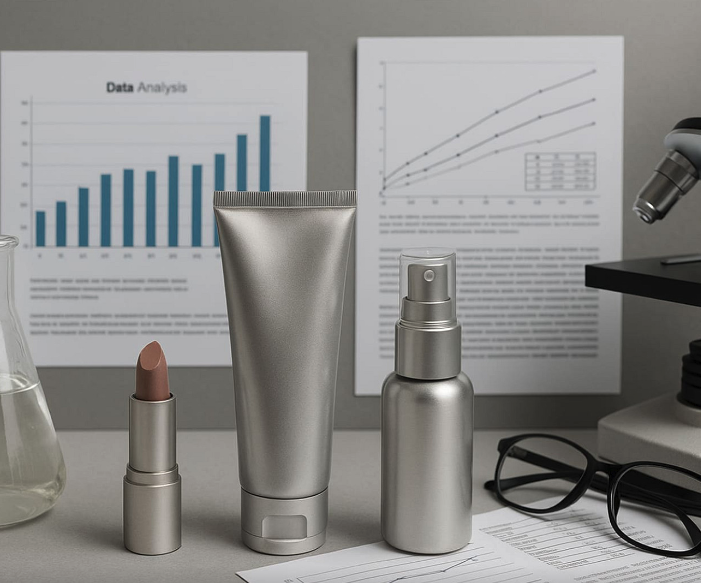From Promise to Proof: How Clinical-Grade Evidence Is Rewriting Beauty’s Playbook - Part II
Part 2: What’s Next: Decentralization, Data and the New Standard for Proof
If Part I charted the rise of evidence as beauty’s new currency, Part II peers into the horizon. What does the next decade hold for clinical testing in beauty and haircare? The answer lies in the fusion of pharmaceutical rigor, digital health innovation, and investor appetite for de-risked growth.
The future of Pharma-Beauty will be defined by decentralized clinical trials, modernized data infrastructure, and a global standardization of proof. For founders, investors, and strategics, these shifts are not abstractions, they are practical realities shaping valuations, M&A strategies, and consumer trust at scale.
Pharma-Beauty, Defined
It’s worth pausing to consider the rise of “Pharma-Beauty,” a category defined by formulations, claims, and testing that increasingly align with the rigor of healthcare. Pharmaceuticals and beauty were once separate worlds, but today they are converging.
This convergence is not about making cosmetics into drugs. Rather, it is about adopting the best of pharma - rigor, transparency, validated endpoints, and adapting them for beauty’s dynamic pace. In a world where 91.9% of consumers rank efficacy as the top driver of purchase, and where investors fund science-led brands at 2.5× higher multiples, this fusion feels less like a choice and more like a necessity.
“One of the most powerful shifts borrowed from pharma is the decentralization of clinical trials. In biopharma, decentralized trials (DCTs) allow participants to join from home, using digital platforms, wearables, and remote assessments. The results include faster recruitment, more diverse cohorts, and greatly improved retention.”
Dr. Vivian Bucay, Board-Certified Dermatologist & Clinical Researcher states the future clearly - “The future of beauty investment lies at the intersection of biotech, data, and clinical validation. Without proof, even the most compelling brand story won’t clear the diligence hurdle.”
Decentralized by Design: Expanding Reach, Accelerating Results
One of the most powerful shifts borrowed from pharma is the decentralization of clinical trials. In biopharma, decentralized trials (DCTs) allow participants to join from home, using digital platforms, wearables, and remote assessments. The results include faster recruitment, more diverse cohorts, and greatly improved retention. Beauty is beginning to adapt this model. Imagine testing a scalp serum with participants across urban and rural geographies, capturing outcomes through smartphone imaging, or measuring hydration with connected dermal patches. This is no longer speculative, it is already happening in pilot studies.
According to BioPharma Dive, real-world data transforms global trials, enhancing patient engagement and improving decision-making. For beauty, this means access to richer data, more inclusive representation, and accelerated time-to-market, all while lowering the operational costs of physical site visits.
The impact will be profound: decentralized beauty trials may soon become the default for scale-ups that can’t underwrite half-million-dollar, site-heavy CRO programs yet still need robust, diverse evidence. By shifting much of the study into participants’ homes - eConsent, ePRO diaries, tele-dermatology check-ins, and standardized smartphone imaging - brands can recruit nationally, capture larger and more representative cohorts across hair types and textures, hormonal life stages all while following real-world usage over longer periods of time.
“The impact will be profound: decentralized beauty trials may soon become the default for scale-ups that can’t underwrite half-million-dollar, site-heavy CRO programs yet still need robust, diverse evidence”
Hybrid designs can keep scientific rigor utilizing one or two anchor site visits for instrumented endpoints (e.g., corneometry, TEWL, profilometry, trichoscopy) paired with interim remote assessments to build dense, time-series data. Another active innovation is the use of kits shipped with calibrated tools like positioning guides and smart packaging to track adherence. Enterprise Data Cloud (EDC) technology centralizes data quality checks coupled with telemonitoring results in a reduction of dropouts all without inflating cost.
Data Architecture as a Competitive Edge
Evidence is only as strong as the data infrastructure behind it. In pharma, this is a top priority, beauty is moving in the same direction. Brands that once managed trials with spreadsheets are now investing in electronic data capture systems, AI-powered analytics, and interoperable dashboards. Why? Because investors increasingly ask for data rooms - repositories of trial protocols, raw data, and statistical analysis plans.
For beauty founders, this is an opportunity - building “pharma-grade” data systems doesn’t just strengthen claims, it signals maturity and readiness for acquisition. For investors, it de-risks the bet and for consumers, it translates into transparency - accessible proof that what’s promised is what’s delivered.
If indie brands are experimenting, the multinationals are industrializing. For example, L’Oréal is said to invests nearly €1 billion annually in research and innovation. Its scientists are exploring longevity, sustainability, and hormonal science as hot topics, and its R&D model incorporates everything from biophysical instrumentation to AI-driven molecule discovery. As expected, they are not alone in their future-proofing innovation with other strategics following suit. Estée Lauder, Shiseido, and Unilever have all announced expansions of R&D hubs, with a clear emphasis on clinical-grade validation. For them, substantiation is not just marketing - it is a growth lever across markets where regulators and consumers expect higher bars of proof.
“In beauty today, substantiation is no longer a differentiator - it’s a requirement.”
The lesson for scale-ups is simple and clear - if the giants are setting substantiation as a baseline, challengers must follow suit or risk irrelevance.
Andrew Charbin, Managing Director at L Catterton says “In beauty today, substantiation is no longer a differentiator - it’s a requirement. The brands that pair biotech-level innovation with credible data are the ones securing premium valuations and long-term investor confidence.”
Data isn’t back-office—it’s boardroom strategy
Mergers and acquisitions are a reliable barometer of where the industry is headed. Consider Oddity’s acquisition of AI-biotech startup Revela, a move that brought proprietary molecule discovery into its portfolio. This is not traditional brand-building; it is a biotech R&D play under a beauty banner.
“Oddity is deploying its strong balance sheet to continue reinventing the beauty and wellness market and cement our competitive advantage and technology moat.”
Oran Holtzman, CEO of Oddity
Investors have made their preferences clear: biotech-meets-beauty propositions, clinically validated formulations, and AI-enabled discovery platforms are commanding premium valuations. The years ahead will bring deeper cross-pollination between biotech, digital health, and beauty, reshaping how innovation is sourced and scaled. Each transaction is a signal, capital is underwriting proof into its growth theses. For brands without substantiation, the path to exit is narrowing.
2030 Preview: Proof as a Passport
So, what might clinical substantiation in beauty look like by 2030? Several shifts seem inevitable.
Baseline instrumented claims will become the norm, with even entry-level brands expected to demonstrate efficacy through corneometry, transepidermal water loss (TEWL), or profilometry - once considered advanced, soon simply table stakes. Transparent protocols will follow, with brands publishing plain-English synopses of study design, endpoints, and results as a visible mark of credibility. Inclusive cohorts will move from aspiration to expectation, ensuring trials reflect the full spectrum of skin types, hormonal life stages, and global geographies. Verified data rooms will emerge as a new diligence requirement, with investors seeking GCP-inspired documentation before committing capital, making evidence not an enhancement but a precondition.
“The path forward is clear: choose endpoints that matter, invest early in data infrastructure, publish transparent results, and transform clinical rigor into compelling narratives. Those who embrace this approach will not only sell products but build enduring franchises.”
Finally, hybrid trials, blending decentralized digital assessments with site-based expert grading, will define a balance between speed, scale, and rigor.
In short, clinical data will no longer distinguish the exceptional; it will define the baseline. The only open question is who will demand it first: the consumer, the investor, or the regulator.
The Strategic Imperative: Building on Proof
For founders and executives, the message is unmistakable: substantiation is no longer a cost centre but a growth engine. The path forward is clear: choose endpoints that matter, invest early in data infrastructure, publish transparent results, and transform clinical rigor into compelling narratives. Those who embrace this approach will not only sell products but build enduring franchises. Clinical substantiation in beauty has already advanced from perception surveys to CRO-managed, data-driven studies, and the next decade will accelerate further as pharma’s rigor, digital health’s tools, and investor scrutiny converge. For the brands aspiring to be the next biotech-beauty unicorn the mandate is clear: the era of proof is here, rewriting the industry’s playbook.
In the beauty world of tomorrow, only the credible will be truly beautiful.
References:
Harris Williams (2024). Beauty and Personal Care Consumer Survey. Harris Williams. Available at: https://www.harriswilliams.com (Accessed: 16 September 2025).
Accenture (2023). Beauty & Personal Care Industry Analysis: Science-Led Claims. Accenture. Available at: https://www.accenture.com (Accessed: 16 September 2025).
Bucay, V. (2023). Board-Certified Dermatologist & Clinical Researcher. Quoted in: From Promise to Proof: How Clinical-Grade Evidence Is Rewriting Beauty’s Playbook, Part II.
BioPharma Dive (2023). Real-World Data Transforms Global Trials. BioPharma Dive. Available at: https://www.biopharmadive.com (Accessed: 16 September 2025).
BioPharma Dive × SAS (2023). Survey of Biopharma Executives on Clinical-Trial Data Management. BioPharma Dive. Available at: https://www.biopharmadive.com (Accessed: 16 September 2025).
L’Oréal Group (2023). Research & Innovation Report. L’Oréal. Available at: https://www.loreal.com (Accessed: 16 September 2025).
Zhao, E. (2023). CEO, Revela. Quoted in: Oddity acquires AI-biotech startup Revela. Vogue Business. Available at: https://www.voguebusiness.com/beauty/beauty-oddity-acquire-ai-biotech-startup-revela-76-million-il-makiage (Accessed: 16 September 2025).
Holtzman, O. (2023). CEO, Oddity. Oddity invests $100m to bring pharma’s AI-based molecule discovery to beauty. Oddity Investor Relations. Available at: https://investors.oddity.com/news-releases/news-release-details/oddity-invests-100m-bring-pharmas-ai-based-molecule-discovery (Accessed: 16 September 2025).




